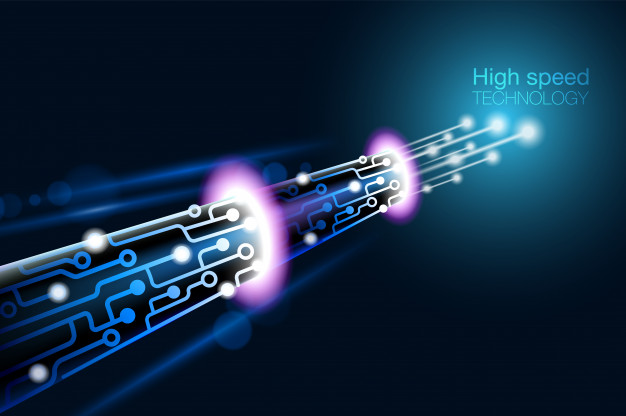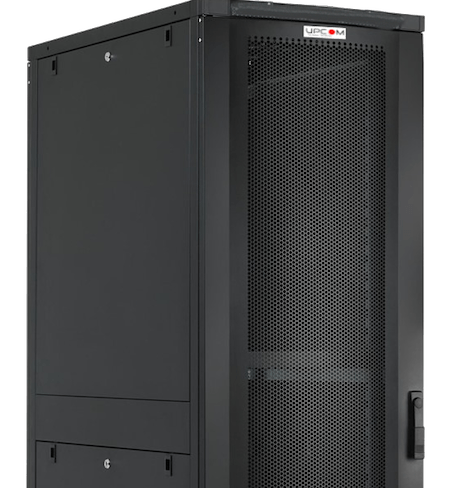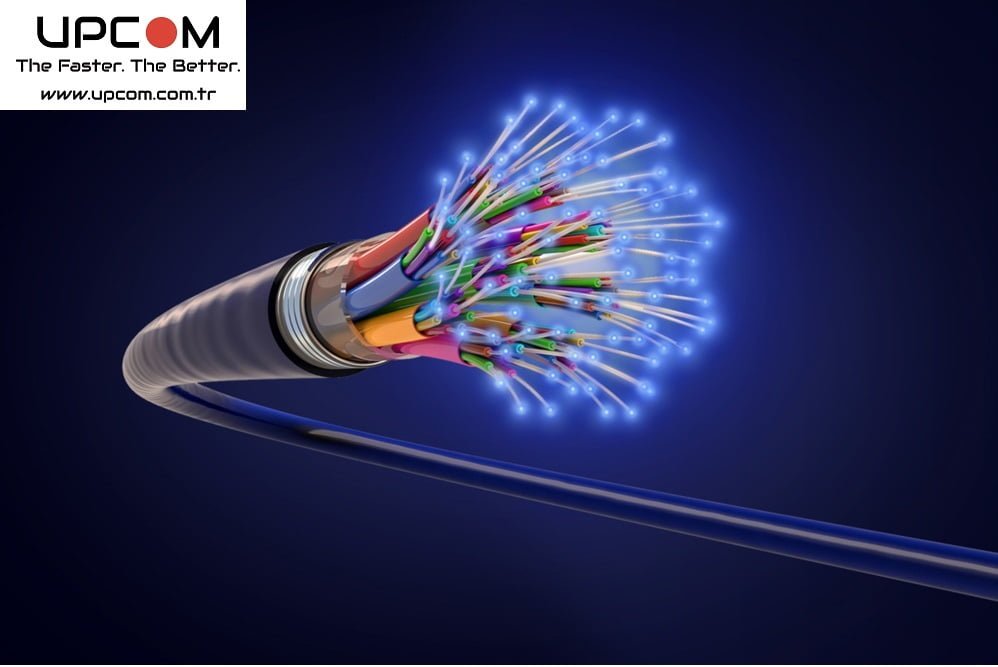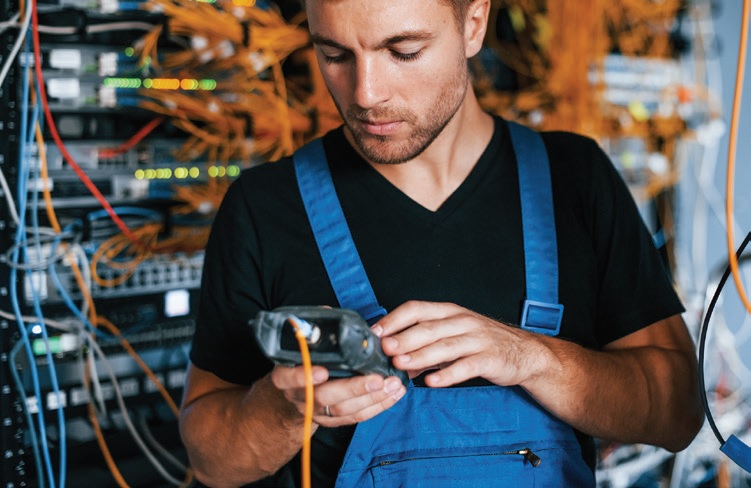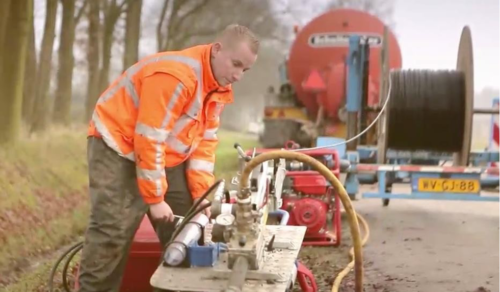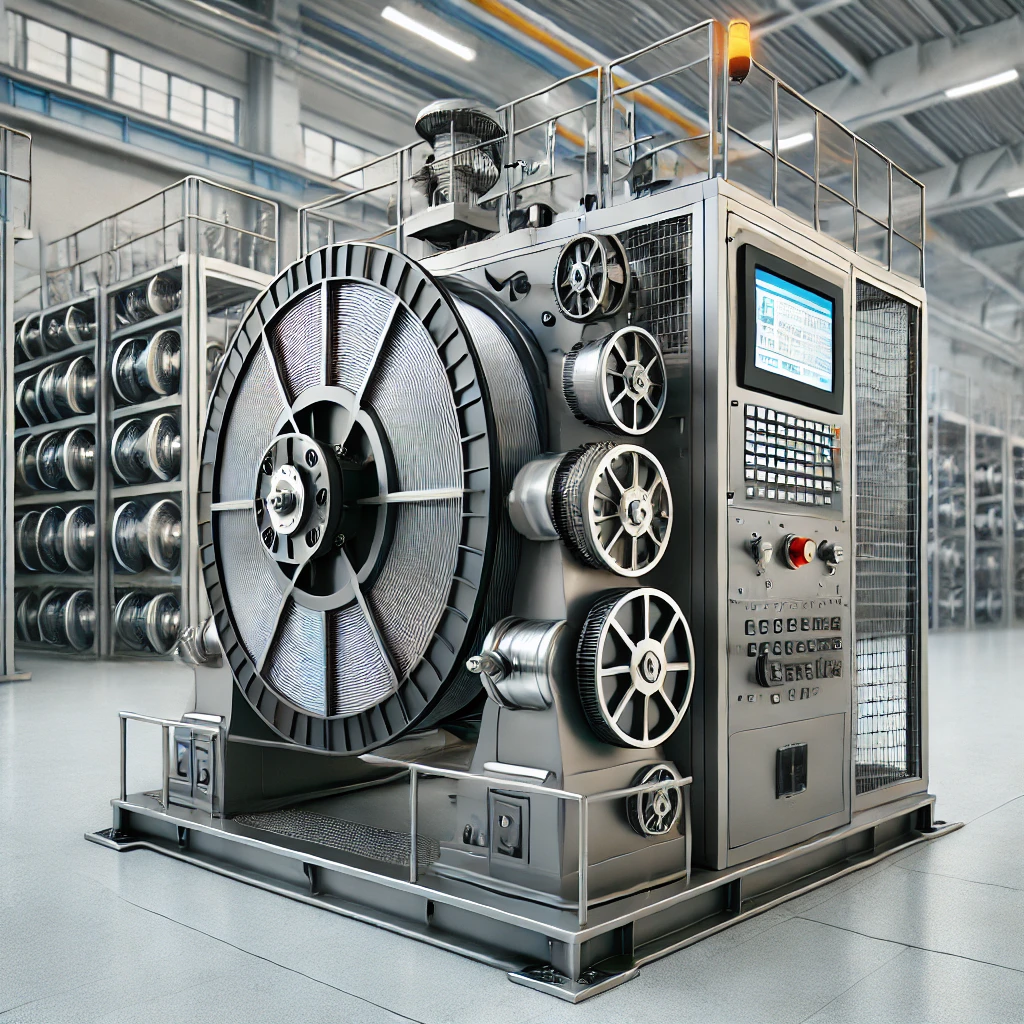22 Oct How Much Does Fiber Optic Cabling Installation Cost?
On average, fiber optic cable installation cost $1 to $6 per 30cm depending on the fiber count. It’s very difficult to estimate an exact price for an entire building to be wired, however an example would be $15,000 to $30,000 for a building with 100 to 200 drops. fiber backbone cabling is somewhat more expensive up front than copper cabling, but the greater capacity and reliability of fiber can actually reduce long-term costs.
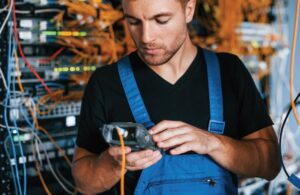
What is Fiber Optic Cable?
Fiber optic cables are composed of strands of glass or plastic fiber that are as thin as a human hair. Surrounding the center glass core is cladding material and a buffer coating. Unlike traditional coaxial and twisted pair cable, which transmit electronic signals, fiber backbone cabling transmits light. This gives fiber cables the following advantages:
- The ability to carry signals hundreds of times further than copper wire
- Extremely high bandwidth
- Greater reliability (due to electromagnetic interference resistance)
- Thinner and lighter weight than copper wire
- Non-flammable
Fiber Optic Cable Considerations
- Fiber optics is often used in local area network (LAN) backbone cabling, although the technology is increasingly used for desktop cabling (connecting individual workstations to the network). It’s sometimes argued that the high bandwidth supported by fiber optics isn’t needed at the desktop, but as the use of bandwidth-hungry applications increases, the added potential will prove useful.
- There are two types of optical fibers: single-mode and multi-mode. Multi-mode fiber has a larger core and can transmit multiple signals per fiber, whereas single-mode can only transmit one signal per fiber. Multi-mode is typically used for shorter distance applications (such as premises cabling).
- A cost comparison of copper cabling and fiber backbone cabling must include both short-term and long-term costs. Fiber optic cable, electronics, and terminations are somewhat more expensive than Cat5 or 5e counterparts, as is fiber optic installation. But the longer links support by fiber means that telecom rooms and their attendant costs (floor space, operating power, and temperature control) can be eliminated. Fiber’s definitive performance edge also plays a role in cost, especially when future growth—of both the enterprise and data—are considered.
Average Costs
- Expect to pay $1 to $6 per linear 30 cm for fiber optic cable installation (depending on the fiber count) plus the cost of connection hardware and terminations.
- The cost to wire an entire building or facility with fiber optics is very difficult to estimate, as many variables come into play. As a reference point, installing Cat5/Cat5e cabling in an office building with roughly 100 to 200 drops costs $15,000 to $30,000. Don’t assume that fiber backbone cabling is more expensive.
- The U.S. Department of Transportation Research and Innovative Technology Administration (RITA) offers fiber optic cable installation costs for various projects. Note that these projects may be on a much larger scale than a typical business.
Is there Any Way To Reduce Off Fiber Cable Installation Cost For long Distance Outdoor Application?

Yes, the answer is Cable Blowing Machine.
High Air Speed Blowing, Air-Assist, Push/Pull Installation, Air Blown Cable, and Cable Jetting; all describe new methods to get cable into conduit using air. To date, the primary use of these methods has been to install fiber optic cable.
Air-assisted fiber optic installation was developed and explored in the Netherlands as well as the United Kingdom in the 1980’s. While blowing methods are used to install individual fibers in tubes in LAN’s, this article will focus on the outside plant installation of jacketed, multi-fiber cable in duct. While this is typically underground duct, blowing will work for aerial duct installations as well.
What is Air Blowing?

Outside plant personnel are very familiar with the pulling method of installing cable. Thread a line through the duct, attach the line to the cable, and pull or tug the cable through the duct. The force needed to pull the cable usually comes from a capstan or hand-over-hand pulling of the rope. This force is needed to overcome the cable’s frictional resistance to movement. Length of installation is limited by the maximum force allowed on the cable.
Air-assisted installation must overcome the same frictional force to move cable, but it does this in a very different way. The force in air blowing first comes from a mechanical device which pushes the cable; and second, from the force of moving air on the cable jacket, or alternatively, the force of air on a piston, missile, or carrier at the front end of the cable.
These two variations of air blowing are diagrammed below:
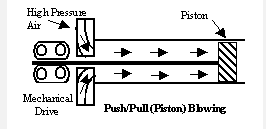
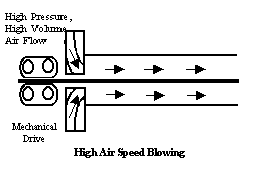
While the pushing device is common in both methods, the purpose of the airflow through the conduit is different. In the high air speed blowing (HASB) method, the conduit is wide-open, and high air volume (300-600 cfm) blows through it. This “wind” pushes on the cable and advances it forward at whatever speed the pusher will support. There is no pulling force on the front end of the cable, only a mechanical pushing force at the back and an air drag force distributed along its length.
The piston (push/pull) method attaches a missile or carrier to the front of the cable. The missile is pushed through the conduit by the air pressure force, and the missile pulls on the cable, thus the term push/pull installation. Because the conduit is blocked, or at least partially blocked, by the piston, this method does not require as much air flow as the high air speed method, and flows of 200 to 300 cfm are typical during push/pull piston installation.
To see more about Cable Blowing Machine, you may like to see our post: How does a Cable Blowing Machine Work?
Pulling Vs Blowing
While all types of cable can be blown into duct, blowing is particularly useful for placing outside plant fiber optic cable. Fiber optic cable is lightweight and flexible. Long, uninterrupted lengths of installed cable are desired. Both these factors play to the strengths of the blowing methods.
In pulling, when a cable goes through a conduit bend, the pulling force on the cable actually pulls the cable into the bend. An exponential frictional force is created that is many times greater than what would occur with just the weight of the cable. Thus, an accumulation of bend angles greatly reduces possible pull length. But cross-country fiber optic pulls don’t have a lot of bends, or do they?

Continuous flexible duct introduces “hidden bends.” These are inherent undulations or waves from reel memory as sketched here.
While these waves can be minimized, they can’t be completely eliminated. Typical displacements of a few inches to a foot increase pulling tension by factors of 3 to 200. Reference [1] presents theoretical detail on the duct wave effect and its magnitude.
Maximizing distance in fiber optic pulling means minimizing duct undulations. Thick walled innerduct with a diameter of 2 inches or more can be placed “straighter” than 1 inch or 1.25 inch duct, but at a cost premium. Multi-cell ducts keep innerducts straight with a rigid exterior, again with a cost and labor add-on. Plowed duct is straighter than trenched duct. In fact, pulling cable into open trenched innerduct is not practical. The amount of undulation simply makes pull lengths too short.
Duct bends, including undulations, do not limit blowing processes, especially HASB, as much as they do traditional cable pulling. In HASB, the cable is not pulled into the bend by a large pulling force, but rather pushed through the bend by a lower, local air pushing force.
In push/pull blowing, the pulling from the piston is partially offset by the pushing force from the mechanical pusher. This somewhat offsets the effects of bends. A more detailed analysis of the bend performance differences in HASB versus push/pull can be found in [2].
Field Comparison and Economics
Blowing processes generally install cable into duct at a higher speed than pulling. Economics can be favorable, especially on large jobs where the cost of equipment can be amortized. Field crews report as much as 50,000 feet of cable installed per day. General cost factors are presented below:
| PULLING | BLOWING | |
|---|---|---|
| Equipment | 1 – 12 M $ | 15 – 45 M $ |
| Speed | 75 – 200 fpm | 200 – 350 fpm |
| Length | 550 – 1060 m | 914 – 2450 m |
| Pull Line | Required | Not Required |
Long, uninterrupted lengths of blown cable can be installed by cascading blowing units. This cascading, or using the units in series to make continuous runs, can minimize the need for figure-eighting.
Blowing requires good planning and preparation, especially duct preparation. All of the units require seals sized to the cable to prevent leakage from the pressure chamber around the entering cable. Properly sized seals should be obtained before starting the job.
References:
[1]”Analysis of Duct Displacement Factor in Fiber Optic Pulling.” J. M. Fee et al, 1997
[2]”Installation of Fiber Optic Cables in Duct,” W. Griffioen, 1993
[3]”https://www.costowl.com/b2b/cabling-fiber-optic-cabling-cost.html
11 reasons why the future belongs to fiber optic
11 Reasons Why the Future Belongs to Fiber Optic “The future belongs to fiber optics!” This bold claim is backed by compelling reasons. Fiber optic technology is not just an upgrade—it’s a transformative infrastructure shaping how we connect, communicate, and consume information. Here are 11......
19″ Rack Cabinet
What is a 19” Free Standing Rack Cabinet? 19” free standing rack cabinets provide a robust, cost-effective enclosure solution. PDU mounting or connectivity on both the front and rear of the cabinet. The Free Standing 19” Rack cabinets are ideal for high-density data center environments,......
5 Fan Facts About the Fiber Optic Cables
Fiber optic cables are a type of cable that use glass or plastic fibers to transmit data. Here are some interesting facts about fiber optic cables: Speed: Fiber optic cables are capable of transmitting data at much faster speeds than traditional copper cables. This makes......
Advancements in Fiber Optic Technology: Improving Bandwidth and Transmission Rates
Fiber optic technology has revolutionized the way we communicate, providing faster and more reliable data transmission over long distances. The use of fiber optic cables has become increasingly popular in recent years, and the technology continues to evolve at a rapid pace. In this article,......
All about fiber optics
What does a fiber optic cable do? A fiber optic cable is a type of cable that uses glass or plastic threads to transmit data. These threads, or fibers, are extremely thin and are surrounded by a protective coating. They are able to transmit data......
Best Fiber Optic Cabling Installation Practices Guide
Fiber optic cabling installation is a complex process that requires specialized knowledge and equipment. Here are some best practices for fiber optic cabling installation to ensure a successful and reliable installation: Plan the Installation: Before starting the installation, it is important to plan......
Cable Blowing by Pressurized Air / Fiber Optic Cable Blowing Procedure
Cable Blowing (Sometime called air assisted cable blowing, Cable Blowing by Pressurized Air, air blowing, jetting and all these words are describing method of cable blowing with pressurized air) Cable Installation has been always a challenge for installers. There are several method to lay the......
Cable Blowing Lubricant
Cable blowing lubricants are specially formulated lubricants used to lubricate cables as they are being pulled through conduits or other tight spaces during the installation process. The lubricant is applied to the cables before they are pulled, and it helps to reduce friction and make......
Cable Blowing Machine work
Cable Blowing Machines here Click here to find out Cable Blowing Machine Product Portfolio Click Here Cable blowing machines, also known as a jetting machine or fiber optic cable blowing machine, is a device used to blow cables, such as fiber optic cables, into ducts......
Cable Spooling Machines: The Ultimate Guide to Efficient Cable Handling
In industries such as telecommunications, energy, manufacturing, and infrastructure, the need for Cable Spooling Machines have never been greater. Traditional manual spooling methods can lead to inconsistencies, labor-intensive processes, and increased cable damage. This is where cable spooling machines revolutionize operations by ensuring precise, automated, and......



